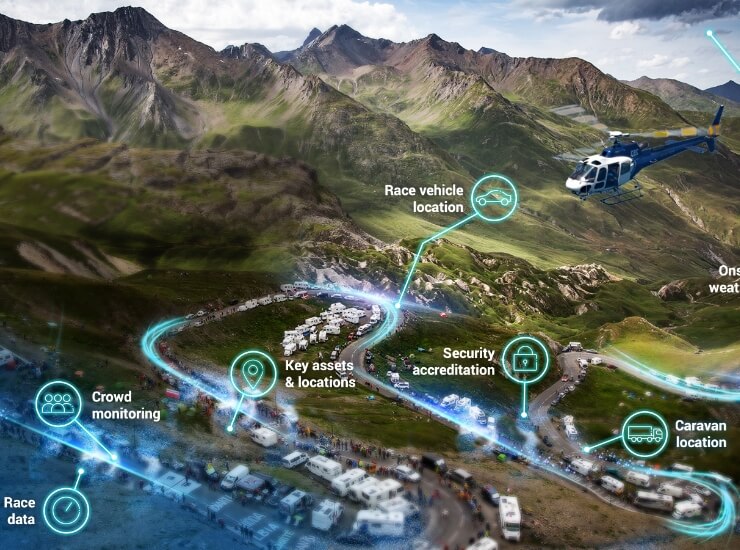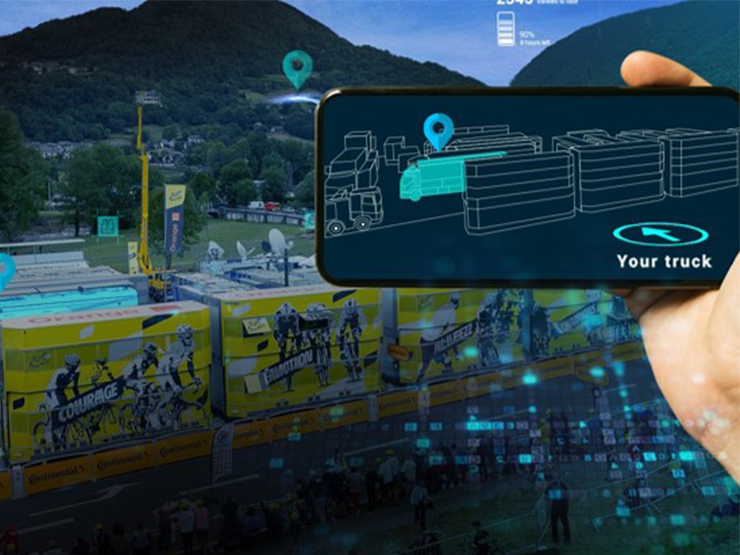-
Featured services
Think beyond the robots
The successful integration of AI and IoT in manufacturing will depend on effective change management, upskilling and rethinking business models.
Read the blog -
Services
View all services and productsLeverage our capabilities to accelerate your business transformation.
-
Services
Network Services
-
Services
Cloud
-
Services
Consulting
-
-
Services
Data and Artificial Intelligence
- AI and Intelligent Solutions
- Data/AI Strategy and Program
- Data Engineering and Platforms
- Data Governance and Management
- Data Visualization and Business Decision
- GenAI Consulting
- GenAI Platforms
- GenAI Industry Services
- GenAI Infrastructure Services
- GenAI Value Transformation
- View Data and Artificial Intelligence
-
Services
Technology Solutions
-
Services
Global Data Centers
-
Services
CX and Digital Products
-
Services
Application Services
-
Services
Sustainability Services
-
Services
Digital Workplace
-
Services
Business Process Services
-
Services
Generative AI
-
Services
Cybersecurity
-
Services
Enterprise Application Platforms

Accelerate outcomes with agentic AI
Optimize workflows and get results with NTT DATA's Smart AI AgentTM Ecosystem
Create your roadmap -
-
-
Insights
Recent Insights
-
The Future of Networking in 2025 and Beyond
-
Using the cloud to cut costs needs the right approach
When organizations focus on transformation, a move to the cloud can deliver cost savings – but they often need expert advice to help them along their journey
-
Make zero trust security work for your organization
Make zero trust security work for your organization across hybrid work environments.
-
-

Master your GenAI destiny
We’ll help you navigate the complexities and opportunities of GenAI.
Explore GenAI -
-
Master your GenAI destiny
We’ll help you navigate the complexities and opportunities of GenAI.
Explore GenAI -
Discover how we accelerate your business transformation
-
About us
CLIENT STORIES
-
Liantis
Over time, Liantis – an established HR company in Belgium – had built up data islands and isolated solutions as part of their legacy system.
-
Randstad
We ensured that Randstad’s migration to Genesys Cloud CX had no impact on availability, ensuring an exceptional user experience for clients and talent.
-
-
CLIENT STORIES
-
Liantis
Over time, Liantis – an established HR company in Belgium – had built up data islands and isolated solutions as part of their legacy system.
-
Randstad
We ensured that Randstad’s migration to Genesys Cloud CX had no impact on availability, ensuring an exceptional user experience for clients and talent.
-

Everest Group PEAK Matrix® Assessment
NTT DATA is a Leader and Star Performer in the Everest Group Sustainability Enablement Technology Services PEAK Matrix® Assessment 2024.
Get the Everest report -
- Careers
Welcome to the Tour de France
By all measures, the Tour de France is a massive event. Held over 24 days, across 3,300km, it attracts millions of fans to cheer by the roadside, over 30 million users across its digital channels, 150 million television viewers in Europe alone, and is broadcast in 190 countries. With the launch this year of the Tour de France Femmes avec Zwift, it’s only going to get bigger!
It’s an incredible logistics challenge to manage an event that moves every day, with typical transfers of over 300km. Six thousand barriers are set up and packed up each day, 4,400 warning signs deployed, 29,000 police, gendarmes, and firefighters deployed, and the race finish area alone covers about 7 hectares including the Zone Technique (broadcast zone), VIP hospitality and fan zones. Thousand of workers, hundreds of vehicles, motorbikes, helicopters and planes, all part of the travelling circus.
As you would expect, managing such a complex event is a huge challenge, particularly given the remote areas the race travels through, and the unexpected challenges that inevitably crop up. Race organizers, Amaury Sports Organisation (A.S.O.), together with the French police and local municipalities have deep expertise in managing this complexity, but rely on multiple information sources, limited communications and a small number of hard to replace experts.
Having worked on the race since 2015, I’ve seen this firsthand. Arriving at a stage in the morning, trying to figure out where to park, finding the secure entrance for the Zone Technique, the VIP zones, toilets, and most importantly, where to find a Nutella crepe!

Over the last two years, we’ve worked with A.S.O. to implement a program to create the world’s largest connected stadium, with the vision to digitize every aspect of event, and provide new experiences for fans and the Tour de France workforce, powered by a digital twin, a virtual model of the physical operations.
Digital Twin?
Industries such as manufacturing, energy, utilities and healthcare are increasingly adopting digital twins to enable remote operations, drive operational efficiencies and support improved patient care. According to Gartner, ‘A digital twin is a virtual representation of an entity such as an asset, person, organization or process’. They’re enabled by a combination of IoT sensors, real-time analytics, edge computing, data platforms and immersive 3D visualizations.
If we take the example of a manufacturer, factory equipment is increasingly instrumented, as are supporting systems such as supply chain and personnel management. A digital twin can use real-time data from IoT sensors throughout the production line, integrated with other data sources to model the behavior of the factory. This can then enable the factory to be monitored by remote teams, identify patterns that can enable new efficiencies and predict potential equipment failures.
So, what does this have to do with a bike race?
Much like that example of a connected factory, the Tour de France is a complex operation, involving many different teams, systems and locations. Using a range of different IoT sensors and connected systems, we’re able to create a digital model of the whole race including riders, race vehicles, the publicity caravan, the route itself, the zone technique and VIP zones. This allows us to create new tools for managing the race operations, such as a dashboard providing the live race situation for the race officials in the race vehicles, updates to the event operations mobile app to support staff on the ground, and a 3D geographic model providing an overview across the whole race.
Within NTT, we’ve gone even further with our mobile control center, allowing us to monitor our workspace including temperature, air quality, occupancy and energy usage, and modelling it as an interactive 3D visualization using gaming technology.

While this is great for supporting the operations teams, it also brings new features for fans. We can use the digital twin to predict the estimated time of arrival for the publicity caravan, and the riders at every point along the race route, allowing fans to plan their day. As we continue to digitally model the race, it creates the opportunity for future way-finding services, highlighting crowded spaces and allowing them to more easily purchase merchandise.
Which way to the metaverse?
The technology industry loves to hype up new concepts, and the metaverse is no exception. As a result, it’s often easy to dismiss the next big thing as just a fad. But more often than not, once you peel back the marketing and buzzwords, there are some significant underlying trends that shouldn’t be dismissed so readily.
Gartner defines the metaverse as ‘A collective virtual shared space, created by the convergence of virtually enhanced physical and digital reality. The metaverse is persistent; providing enhanced immersive experiences.’
Thinking about it that way, we can see several broader trends including digital collaboration, digital modelling of physical things (digital twins) and increasingly immersive experiences lead by gaming and e-sports.
The way I see it, by creating the Tour de France digital twin, we’re not only supporting the fans and operations of the Tour de France today, but also positioning the race for the future by putting in place the building blocks for the evolving world (or worlds) of the metaverse.
Keeping it real
As I describe this futuristic vision, part of me bristles at the idea of turning the rich, vibrant human experience of a live sporting event into a sterile set of ones and zeros.
It’s one of the great challenges for those of who are technologists, to create solutions that empower, connect and enable us all to live rich human lives … and maybe find that Nutella crepe while enjoying the excitement of the crowd as the world bests cyclists fly by. Read our case study to find out more.

